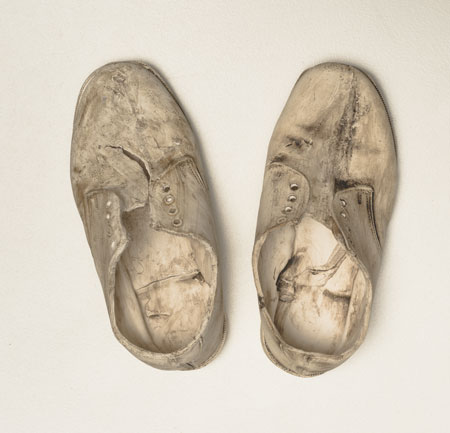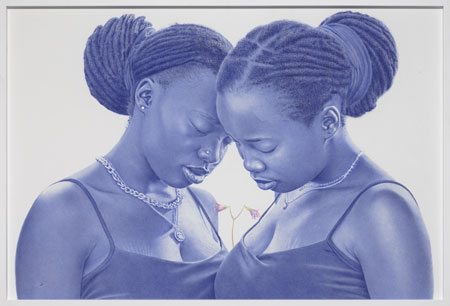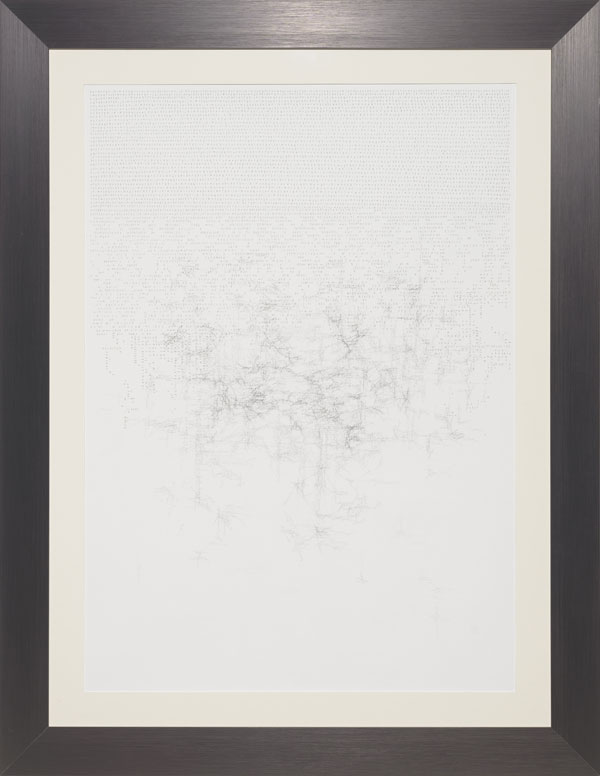Winners Circle
Judges
A special thank you to our judges.
Sasol and the Association of Arts would like to express their heartfelt gratitude to the Sasol New Signatures judges, both regionally and nationally, who give of their valuable time to evaluate and select the winners from the hundreds of entries received.
Thank you for your great contribution to the success of this magnificent exhibition.
|
|
Nosiviwe MATIKINCA (Gqeberha)
Ndiziphiwe – They were given to me
Ceramics
(10) 8,5 cm x 10 cm x 13 cm
Biography
Nosiviwe Beauty Matikinca was born in the City of Cape Town and grew up in Hermanus. During her educational stint in Cape Town, she attended Cedar High School of the Arts and took extra art classes at the Peter Clarke Art Centre. After moving back to Hermanus, she continued her art training through after-school art classes at the Enlighten Education Trust with Zimbabwean artist Ashleigh Temple-Camp. Presently, Matikinca is a third-year student completing a Bachelor of Visual Arts degree at Nelson Mandela University in Gqeberha.
Synopsis
Ndiziphiwe – They were given to me, is a ceramic installation about underprivileged learners who wear school shoes that are handed down to them by their older siblings or family members. These hand-me-downs are special as they embody the journeys walked by their respective owners. In poorer communities throughout the country, an old pair of shoes is not thrown away when it is still wearable, it is seen as precious. By immortalising these shoes through the ceramic slip-casting method, they have been given a new purpose. This process also enables the artist to capture the essence of the used shoes, including every mark, scratch and hole. As ceramic sculptures, the shoes have been symbolically restored, but are also very fragile and breakable. This fragility is a metaphor for the precarity of the public schooling system of our country, where black South African learners are subjected to sub-standard education.
Amawele
Ballpoint on paper
92,5 cm x 136 cm
Biography
Themba Mkhangeli is a multi-award-winning visual artist and environmentalist with a penchant for entomology. He grew up in Mthatha in the Eastern Cape, in a small village called Julukuqu. Currently, he is based in Nyanga East, Cape Town. His preferred medium is a ballpoint pen and most of his images capture the human form, particularly portraits. He started making art at the age of five but realised his talent for artmaking in Grade 6 and he has not looked back since.
Synopsis
Amawele is a portrait of twin sisters who reside in the artist’s neighbourhood. This image is a homage to their beauty and innocence, embodied through the unerasable process of ink pen drawing. Although Gender Based Violence inserts unerasable marks on women that hurt and scar them, the unerasable mark-making used in this drawing does the opposite, because it celebrates and honours the beauty of women. The diamond shape between them is the symbol of beauty he always finds in women, it also creates a balance between the two figures.
Matthew David BLACKBURN (Johannesburg)
Suffocation
Acrylic on hardboard
60 cm x 70 cm
Suffocation is an ultra-realistic painting that shows a black plastic bag slowly engulfing a lush forest floor. This is a representation of how plastics are damaging the planet and inevitably suffocating those who inhabit it. Inspired by the Australian artist Robin Eley, the painting was done using acrylic paint on a hardboard. The strategically cut board and realistic-looking plastic create an illusion that draws in the viewer's attention allowing them to visually interact with the artwork and decipher the appearance of a 3D image on a 2D surface. This painting forms part of a body of work titled “Decay”, which highlights the ever-growing problem of pollution, and how it is often overlooked due to instant gratification and greed in our society.
Vertigo
Ink and graphite on paper
107,5 cm x 83 cm
Telegraphy, today considered an outdated means of electronic communication, played a revolutionary role in the development of contemporary communicative practices. As the forerunner of instant messaging, the telegraphic system laid the foundation for the invisible circuitry system that facilitates the movement of information today. Similar to the nervous system, the telegraph broke down texts into electrical codes that were rapidly transported across space and time and reassembled into coherent messages. Using the synergistic relationship between telegraphy and the nervous system as a blueprint, this artwork explores the sensory vertigo that sometimes occurs with the constant influx of information.
Vertigo
Ink and graphite on paper
107,5 cm x 83 cm
Telegraphy, today considered an outdated means of electronic communication, played a revolutionary role in the development of contemporary communicative practices. As the forerunner of instant messaging, the telegraphic system laid the foundation for the invisible circuitry system that facilitates the movement of information today. Similar to the nervous system, the telegraph broke down texts into electrical codes that were rapidly transported across space and time and reassembled into coherent messages. Using the synergistic relationship between telegraphy and the nervous system as a blueprint, this artwork explores the sensory vertigo that sometimes occurs with the constant influx of information.
Acrylic paint and glass
180 cm x 152 cm
Restoration is a painting that conveys the message of restoration, repairing or mending what has been broken or damaged in our lives. This artwork is inspired by daily living which offers success and joy, and trails and challenges. Our spirits are broken or damaged on multiple levels, firstly, by the people we love the most, secondly, by people who hate us, thirdly by the socio-political and economic system that governs the country, and lastly, by ourselves. Daily challenges try to break us into pieces, but we must always find a way to keep on picking up those pieces and mend them and become more beautiful than before. The pieces of glass that have been added to the image symbolise how we can mend ourselves to become stronger and more beautiful than before. These pieces also symbolise how African people can be united.
Mixed media – acrylic paint on MDF
91,3 cm x 60,8 cm
Letebele’s artwork delves into the exploration of memory and time, presenting a profound examination of indigenous knowledge systems. Through the development of a sophisticated visual language, he has constructed a unique system and alphabet that encapsulate the essence of movement, archiving, self-identity, and self-preservation. The materials he works with are chosen specifically as he believes that developing his own mixed media best captures the essence and consistency of his subject matter.
By mixing various water-based compounds and adhesives and applying them to medium-density fiberboard, the materials allow the artist to reimagine calligraphy in an innovative way that is texturally rich and tactile. The artist wanted to elevate his calligraphy script from the traditional flat 2D plane into a contemporary 3D plane.
This third dimension presents a sculptural form that also enhances the materiality within the artworks. Drawing inspiration from his Tswana heritage, the artist leverages the rich cultural backdrop to provide a contextual framework for the deep conceptual foundations that shape his artistic expression. At the core of his work lies the creation of a distinctive visual calligraphy script, serving as a visual lexicon proposition for Azania—a protest name for South Africa.
By utilising the power of symbolism and aesthetics, he seeks to transcend cultural boundaries and foster dialogue about the complexities of our shared human experience. In essence, his artistic practice serves as a conduit for cultural exploration, aiming to inspire a renewed appreciation for indigenous knowledge and a deeper understanding of our interconnectedness as inhabitants of this ever-evolving world.
There is still time I
Ribbon thread on linen
66,5 cm x 66,5 cm
There is still time I is part of a series titled “Landscapes of Time”. This series of fibre and textile works of imaginary landscapes viewed from above represent life in progress and the passage of time. The uniform ribbon thread and the repetitive nature of the techniques used by the artist reinforce the consistent, rhythmic passage of moments. Using different stitching techniques, the artist differentiates between big life events and the seemingly mundane moments in between. Both are essential in creating the landscape but here the mundane is elevated as a type of commentary on a fast-paced society where little value is given to them. For the artist, this is where authentic ideas are born and where change can happen, where there’s time to connect with nature and one another. The use of texture and detail entices the viewer to take a closer look at how they spend their time, carving a uniquely scarred landscape. In this specific work the perception that “there is still time” is a comforting thought both personally and for society at large. Comfort and hope are conveyed through the use of soft materials, colour and a sense of space.











